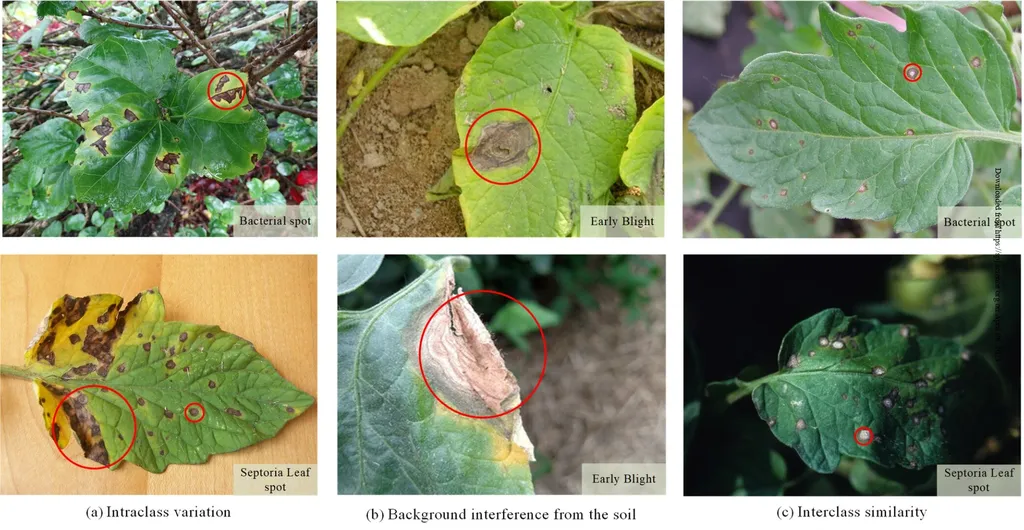In the heart of Vietnam’s Mekong Delta, a region renowned for its fertile lands and agricultural prowess, a groundbreaking development is taking root. Hoang-Tu Vo, a researcher from the Information Technology Department at FPT University in Can Tho, has introduced a novel deep learning architecture that promises to revolutionize the way we monitor and manage tomato leaf diseases. Published in the *CTU Journal of Innovation and Sustainable Development* (translated from the original Vietnamese title), this research could significantly impact global agriculture, particularly in resource-constrained environments.
Vo’s innovative model, dubbed MobiTran-SE, combines the efficiency of MobileNetV3Small with the power of Transformer-based modules and Squeeze-and-Excitation (SE) blocks. This hybrid architecture is designed to extract multi-level features from images of tomato leaves, focusing on channel-wise features and long-range spatial interactions. “The integration of these components allows the model to distinguish between complex disease patterns with remarkable accuracy,” Vo explains. The results speak for themselves: MobiTran-SE achieves an impressive classification accuracy of 99.02%, setting a new benchmark in the field.
The implications of this research are far-reaching. For farmers, the ability to quickly and accurately diagnose tomato leaf diseases can lead to timely interventions, reducing crop losses and improving yields. “This model is not just about accuracy; it’s about practicality,” Vo emphasizes. “Its fast convergence and strong generalization make it ideal for real-time deployment in the field.” This is particularly crucial in regions where resources are limited, and the stakes are high.
The commercial impact of this technology extends beyond the farm. In the broader agricultural technology sector, MobiTran-SE represents a leap forward in precision agriculture. Its lightweight and efficient design makes it suitable for integration into existing systems, from drones to handheld devices, enabling real-time monitoring and data-driven decision-making. This could lead to the development of new agricultural tools and services, creating opportunities for tech companies and startups to innovate and expand.
Moreover, the success of MobiTran-SE highlights the potential of hybrid deep learning architectures in other areas of agriculture and beyond. The model’s ability to handle complex patterns and relationships suggests that similar approaches could be applied to other crops, pests, and diseases, paving the way for more intelligent and sustainable agricultural practices.
As the world grapples with the challenges of climate change and food security, innovations like MobiTran-SE offer a glimmer of hope. By harnessing the power of artificial intelligence, we can enhance our ability to monitor and manage agricultural systems, ensuring a more secure and sustainable future. Vo’s research is a testament to the transformative potential of technology in agriculture, and it underscores the importance of continued investment and innovation in this critical field.
In the coming years, we can expect to see MobiTran-SE and similar technologies playing an increasingly important role in global agriculture. As Vo puts it, “This is just the beginning. The possibilities are endless.” With each breakthrough, we move closer to a future where technology and agriculture work hand in hand to feed the world.

